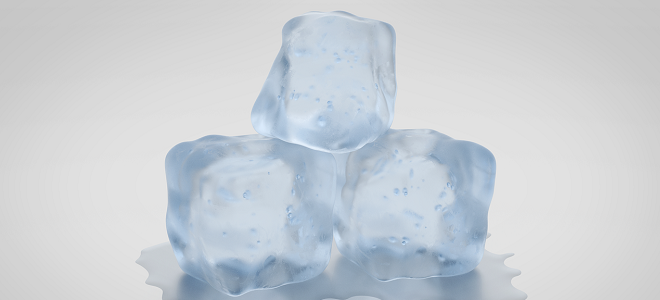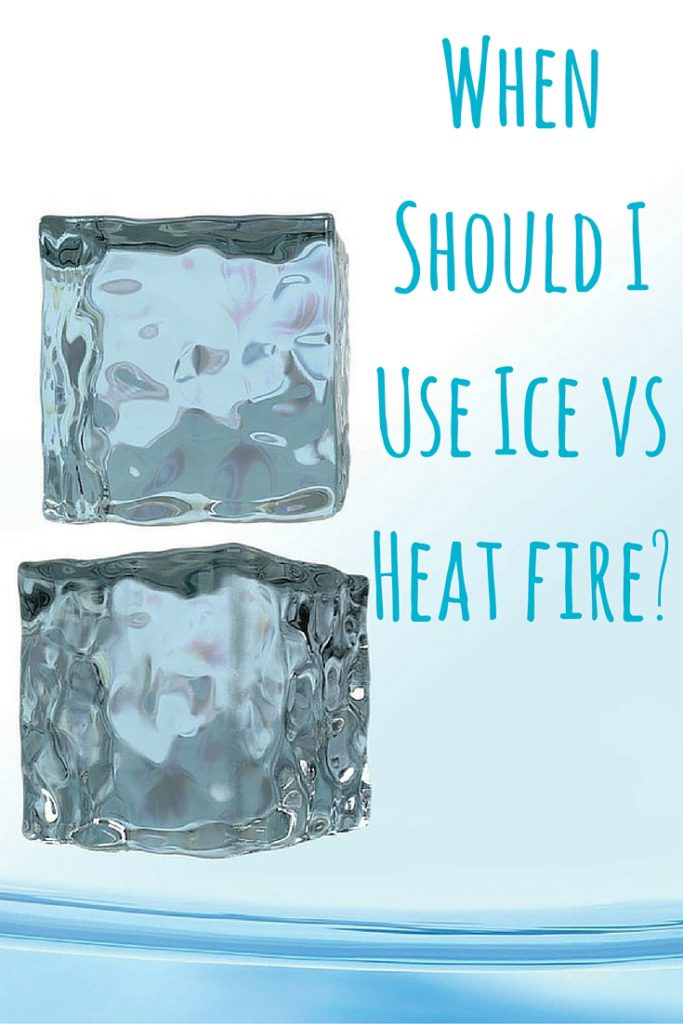
When to Use Ice vs Heat Therapy
It can get confusing whether to use ice vs heat when it comes to injury. Everyone (that isn’t a doctor) has a different opinion. So what’s the truth? Here’s the breakdown!
Ice vs Heat: Does it even matter?
Do you know when you should use ice versus heat and why?
If not, don’t worry—many people confuse the two, also known as cryotherapy and thermotherapy, respectively.
It is helpful to know which to use for certain types of pain, however, as heat and cold are the two most common and affordable options with minimal risks. Read on to learn when to use (and not use) ice vs heat therapy.
Ice Is For Acute & Recent Injuries
 Generally speaking, that is. Did the pain just hit you suddenly while doing an intense workout or lifting something far too heavy? Then you likely have some superficial inflammation that requires icing.
Generally speaking, that is. Did the pain just hit you suddenly while doing an intense workout or lifting something far too heavy? Then you likely have some superficial inflammation that requires icing.
Cold therapy is best for acute inflammation and pain caused by tissue damaged that occurred recently. This means when the injury is still red, inflamed, or sensitive. Cryotherapy should typically be used 24 to 48 hours post-injury, or until swelling, tenderness, or inflammation are gone.
Injuries that should typically be treated with ice include:
- Muscle strain
- Traumatic injury
- Headaches
How Does Cold Therapy Work?
Cryotherapy slows blood flow, thus calming inflamed tissue and reducing pain and swelling.
What is the Safest Way to Use Cold Therapy?
A cold treatment should only be applied locally, for no longer than 20 minutes. Ice packs should be wrapped in a thin towel or pillowcase, and not applied directly to the skin.
When to Heat It Up
Heat therapy is best for:
- Muscles spasms and trigger points
- Chronic conditions are often dominated by spasms and trigger points (e.g. back and neck pain)
- Relaxing the nervous system and mind
Since stress and fear are major contributors to many chronic pain problems, reducing them can in turn help those problems.
Heat Therapy for Low Back Pain
Heat therapy may not result in miracle cures; however, it does help and is largely preferred over ice. Trigger points seem to respond positively to heat, and many patients list heat as one of the few things that consistently relieves pain. Those who suffer from back pain caused by spasms may also find relief from the heat.
Since most back pain is not caused by inflammation, or the inflammation is so minor and/or deep, heat therapy is unlikely to aggravate it.
Instead, heat loosens muscles and improves circulation to reduce pain.
How Does Heat Therapy Work?
Thermotherapy opens up the blood vessels, therefore increasing blood flow and supplies oxygen and nutrients to reduce pain in joints and relax sore muscles, ligaments, and tendons. This helps decrease muscle spasms while increasing your range of motion.
How Do I Safely Use Heat Therapy?
Heat sources can provide either dry or moist warmth, although dry heat sources may dry out the skin and moist heat may be more effective. Heat can be applied using:
- Microwavable heating pad
- Hot water bottle
- Heated massage chairs
- Gel packs
- Hot baths

The heat should be warm, not too hot, and you’ll want to maintain it at a consistent temperature if possible. Never apply a heat source directly to your skin; instead, wrap it in a thin towel. Don’t apply heat for longer than 20 minutes at a time, unless your physician recommends otherwise.
Don’t Mix Them Up
Knowing when to use heat versus ice can save you a lot of unnecessary pain. After all, you’re already in pain—you don’t need anymore!
Do Not Use Cold Therapy When…
Your muscles are tight and/or you’re experiencing spasms. Cold can actually make muscle tension and spasms worse! This is because the cold makes the muscles contract even harder and trigger points burn and ache more sharply.
Ice and Low Back Pain
Low back pain and neck pain are often mistaken as “ice-able” injuries. On the contrary, inflammation and trauma are not typically a factor in back pain.
The majority of low back pain cases are actually caused by the pain of muscular trigger points. Applying cold can lead to the formation and aggravation of trigger points. This is thought to be because cold causes muscles to contract, though there may be other factors (like neurological).
Basically, the icing should only be used for back pain that has come from a true muscle strain or other traumatic injuries of the low back muscles. There has to be some superficial inflammation to cool off for ice to be effective. A true muscle strain refers to a genuine ripping and tearing of muscle tissue, which can occur only during a significant exertion (e.g. lifting something you shouldn’t).
Do Not Use Heat Therapy When…
Your injury is swelling or inflamed. Heat and inflammation are an especially bad combination, as they can increase inflammation and pain. Use cold until the swelling and inflammation go down. Heat should also not be used on an open wound or stitches.
Wrap-Up
Always be sure to consult with your doctor regarding the use of ice vs heat therapy for any type of injury or condition. Neither will be effective if it is unwanted. In other words, heat probably won’t make you feel better if you’re sweating, whereas icing won’t help if you’re shivering (check out the benefits of sweating).
At the end of the day, deciding whether to use cold or heat therapy comes down to what is most comfortable for you!
- When To Use Heat Or Ice - April 19, 2016


